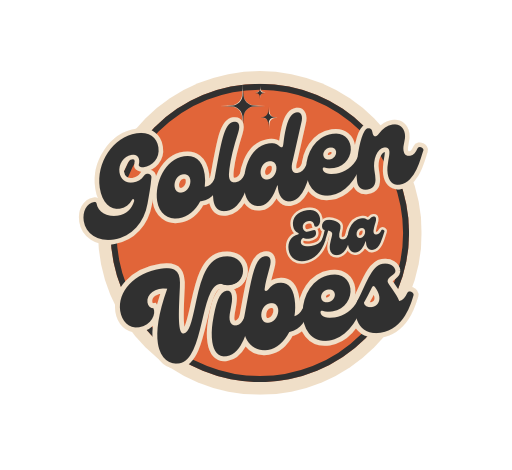13 Surprising Things You Could Do At The Library In The ’70s And ’80s
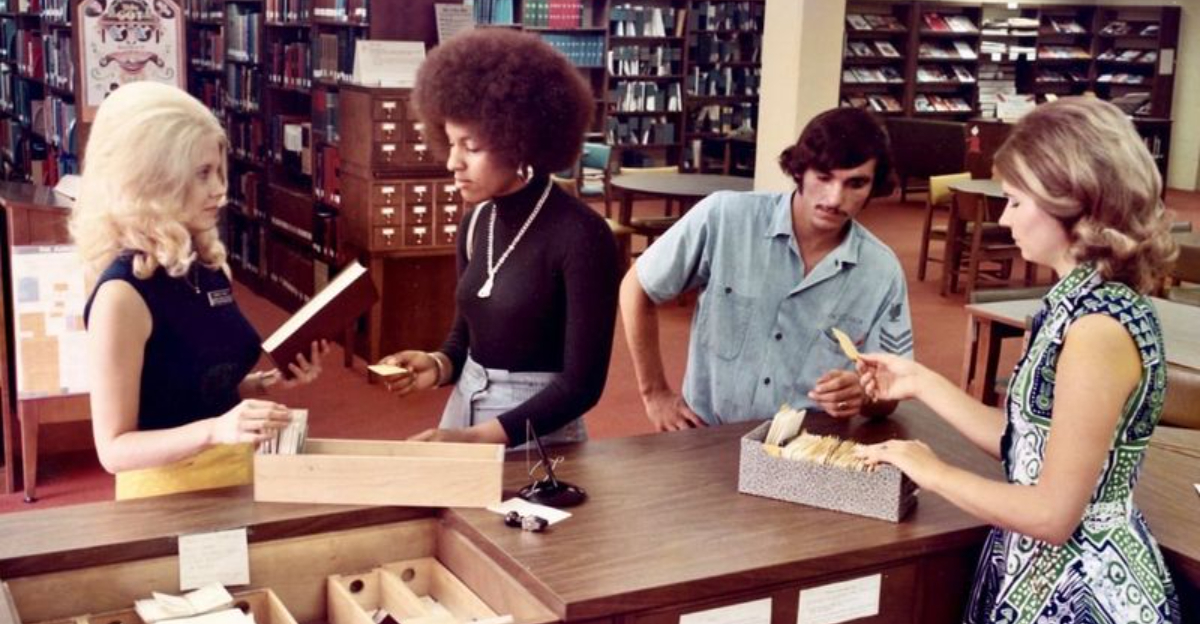
Libraries in the ’70s and ’80s were nothing short of magical—so much more than quiet places to borrow books. Growing up during that golden age, I saw the library as a wonderland of discovery, mystery, and community. The scent of aged paper hit you the second you walked in, and the hushed whispers felt almost sacred.
But it wasn’t all shushing and studying—libraries back then were lively hubs of activity. You could check out vinyl records, attend puppet shows, flip through card catalogs like a treasure hunt, or huddle in a corner with a stack of “Choose Your Own Adventure” books.
There were filmstrip viewings, reading contests with actual prizes, and storytime sessions that felt like magic spells cast by the world’s best storytellers. All of it—free and just a bike ride away. Before Wi-Fi and search engines, libraries gave us a sense of wonder that’s hard to replicate today.
1. Playing with Filmstrip Projectors

Remember that distinctive ‘beep’ signaling when to advance to the next frame? Libraries housed educational filmstrips that transported us to exotic places and historical events long before YouTube existed.
During my sixth-grade report on volcanoes, I commandeered the library’s viewing station for hours. These filmstrips came in small plastic containers with accompanying cassettes that provided narration, complete with that iconic tone indicating when to advance the frame.
Libraries often dedicated special rooms or carrels equipped with projectors where students could operate these machines independently. The tactile experience of loading film, adjusting focus, and controlling the pace of information delivery gave us a sense of technological mastery that clicking through websites simply can’t replicate.
2. Navigating Massive Card Catalogs
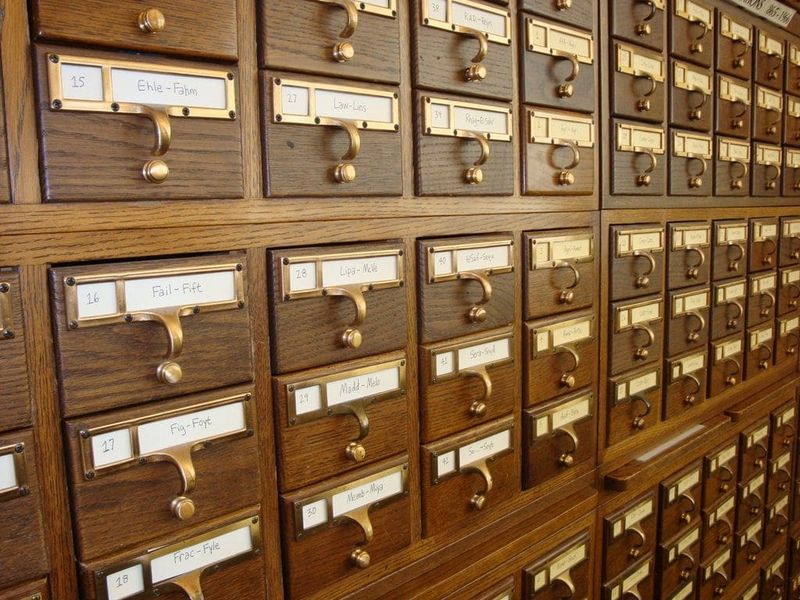
Long before digital databases, we embarked on treasure hunts through wooden cabinets filled with thousands of meticulously typed index cards. The rhythmic sound of fingers flipping through these cards created the soundtrack of research.
My first research project taught me the Dewey Decimal System’s mysteries. Each drawer contained alphabetized cards with author names, titles, and subject headings, all cross-referenced with magical precision.
Finding a book required detective skills as you pulled out long drawers, thumbed through cards, and jotted down cryptic numbers on scrap paper. The triumphant moment of locating your book on shelves after decoding these numbers delivered a satisfaction that today’s instant search results can never match!
3. Attending Film Screenings and Movie Nights

Saturday afternoons at my local library meant free movie screenings complete with the hypnotic whirring of 16mm projectors. Libraries transformed into community theaters, showing documentaries, classic films, and children’s features that many families couldn’t afford to see elsewhere.
The children’s librarian, Mr. Rodriguez, would dramatically dim the lights while we sat cross-legged on the carpet. Technical difficulties were common—film breaks, focus issues, sound problems—but somehow added to the charm.
During summer vacation, our library ran weekly movie series with themes like ‘Adventure Films’ or ‘Science Fiction Classics.’ For many kids from lower-income families, these free screenings provided their only access to cinema, making libraries essential cultural gateways.
4. Exploring Microfiche Mysteries
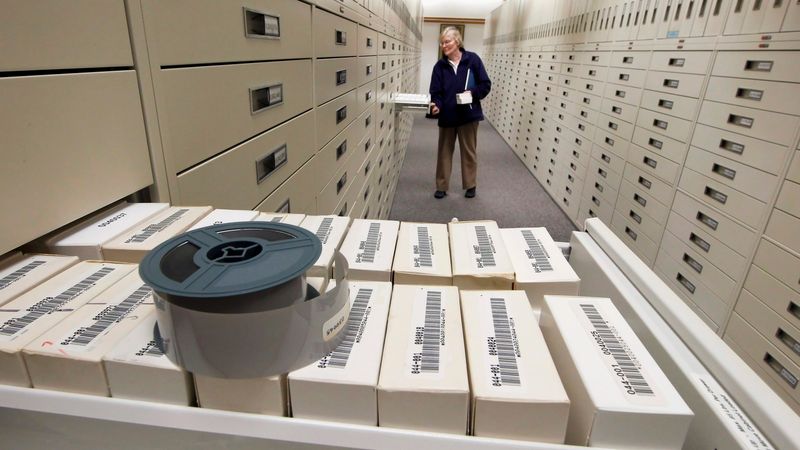
The futuristic microfiche readers in the reference section made me feel like a secret agent accessing classified information! These machines let you view tiny photographs of newspaper archives, historical documents, and rare books that would otherwise be inaccessible.
During my sophomore history project, I spent hours hunched over the glowing screen, scrolling through newspapers from the 1940s. The process was oddly meditative—loading the film, adjusting the focus, and scanning through history frame by frame.
Libraries housed extensive microfiche collections of local newspapers, enabling genealogy research and historical investigations. Some advanced libraries even featured reader-printers that could make physical copies of what you found—for a dime per page, you could take history home with you!
5. Borrowing Vinyl Records and 8-Track Tapes
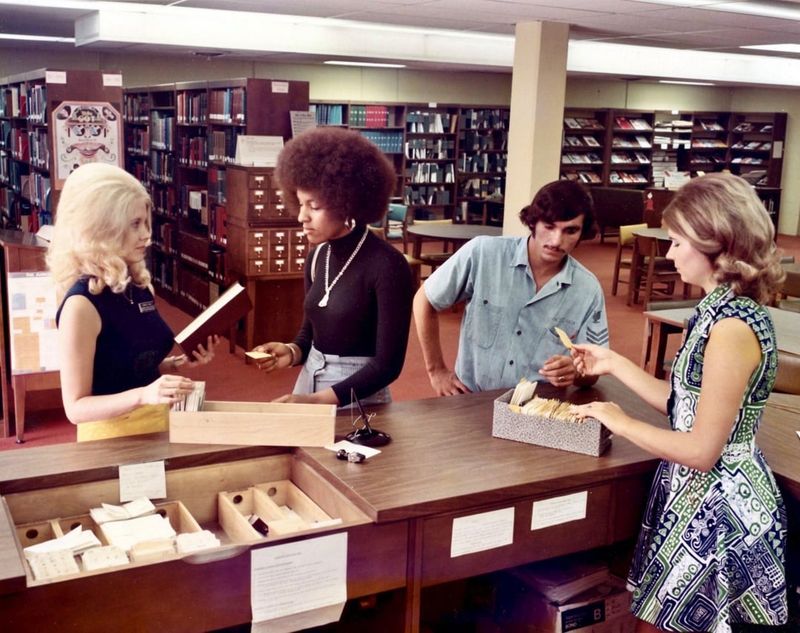
My first musical awakening happened between dusty library shelves when I discovered their extensive record collection. Libraries maintained impressive music libraries where patrons could check out vinyl albums, 8-tracks, and later, cassette tapes just like books!
The selection ranged from classical masterpieces to chart-topping hits, jazz collections to international music. I remember my librarian, Mrs. Patterson, recommending Fleetwood Mac’s ‘Rumours’ when I was just twelve.
These audio treasures typically had a shorter loan period than books—usually one week instead of two—and came with stern warnings about proper handling. Some libraries even loaned portable record players to patrons who didn’t own one!
6. Joining Book Clubs with Celebrity Connections
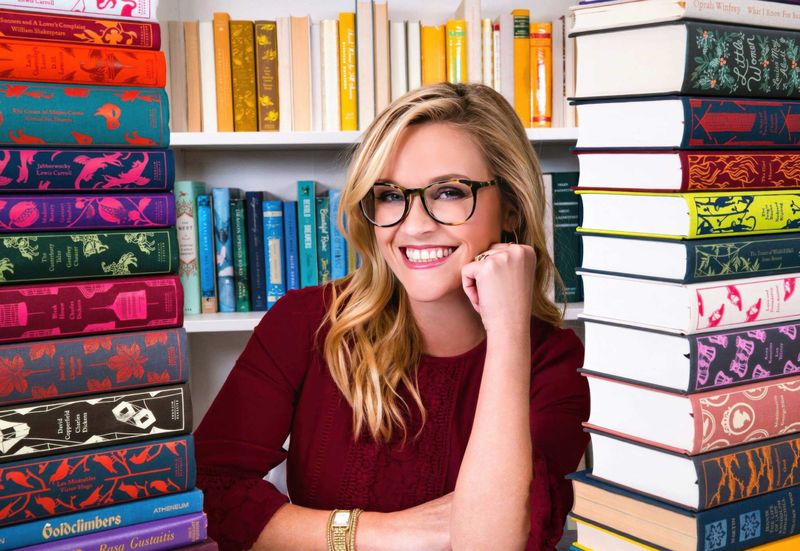
Book clubs in ’70s and ’80s libraries occasionally featured surprise celebrity connections that would blow your mind! My small-town library once received a handwritten response from Judy Blume after our young readers’ group sent her questions.
Libraries facilitated correspondence between reading groups and authors, sometimes resulting in phone calls or even visits from writers. The children’s librarian would send our letters in a big manila envelope and weeks later, we’d gather excitedly to hear the responses.
Some libraries participated in programs where actors or local celebrities would read books on cassette tapes exclusively for their patrons. Finding these special recordings felt like discovering hidden treasures, creating a personal connection to literature that today’s audiobook apps simply can’t replicate.
7. Creating Photocopied Fanzines
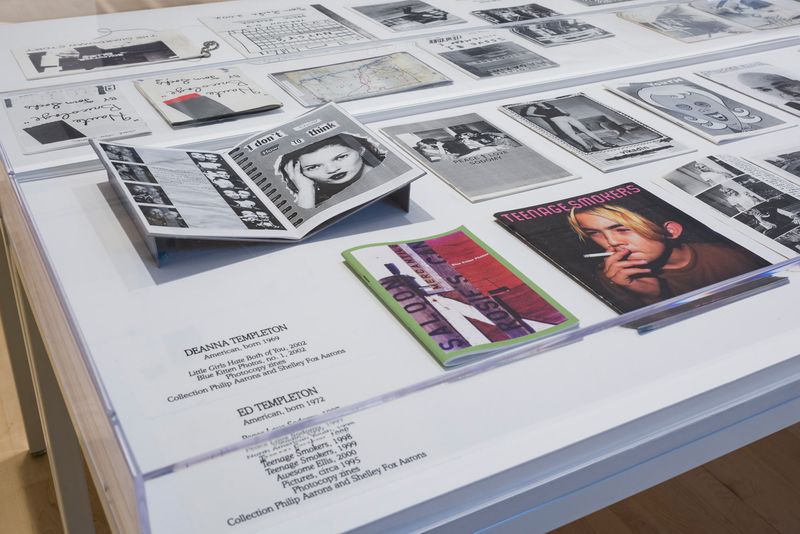
Libraries unwittingly sparked the DIY publishing revolution by providing affordable access to copy machines. My first literary creation—a science fiction fanzine called “Galaxy Tales”—came to life on our library’s coin-operated photocopier for just five cents per page.
Teens would pool their quarters to produce homemade magazines about music, comics, or local scenes. The library became an underground publishing hub where creative kids could experiment with layout, design, and content without needing expensive equipment.
Librarians often supported these creative endeavors, sometimes even providing stapling services or display space for particularly well-crafted zines. This democratization of publishing tools gave voice to countless young writers and artists who might otherwise never have seen their work in print.
8. Accessing Typewriters for Important Documents
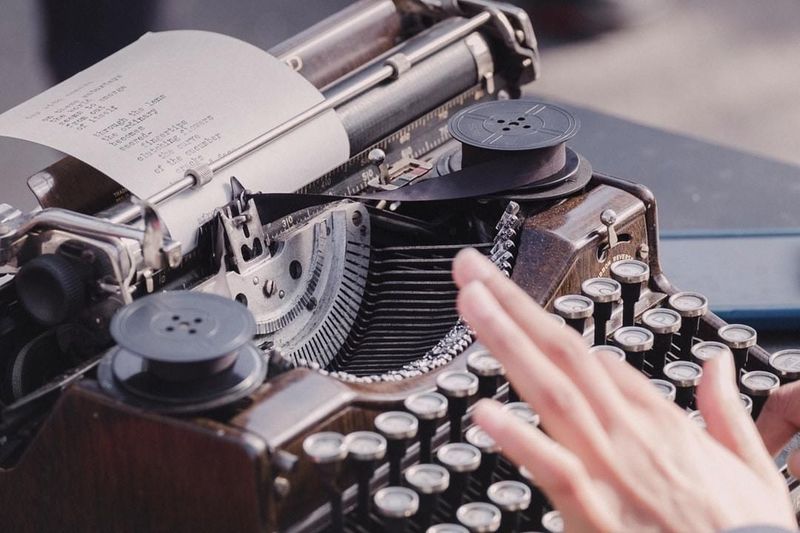
The authoritative clack-clack-DING! of manual typewriters echoed through special rooms where patrons could type resumes, school assignments, and official letters. My first college application took shape on a Smith Corona at our public library.
Libraries maintained typing rooms with machines available by reservation or first-come-first-served basis. Some even offered electric typewriters—cutting-edge technology that seemed magical with their automated carriage returns and correction ribbons!
Librarians kept supplies of carbon paper, correction fluid, and extra ribbons for patrons who needed them. For many families without typewriters at home, these services were essential for completing school assignments, applying for jobs, or creating professional-looking documents in an era when handwritten papers were becoming increasingly unacceptable.
9. Participating in Puppet Theater Workshops
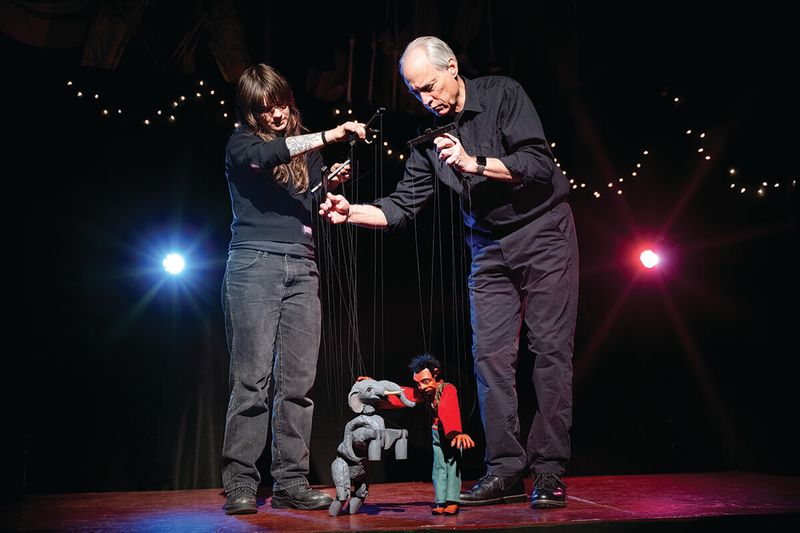
Libraries transformed into puppet theaters where imagination took physical form! My shy personality disappeared when I manipulated a sock puppet created during our library’s weekly craft workshop. Children’s librarians taught us to create characters from everyday materials—paper bags, old socks, wooden spoons, and pipe cleaners.
After crafting our puppets, we’d collaborate on original stories or adapt favorite books into performances for younger kids. These workshops cultivated multiple skills simultaneously: crafting, storytelling, public speaking, and teamwork.
Many libraries featured permanent puppet stages where these creations could perform, complete with curtains and sometimes basic lighting. For children with limited access to arts education, these free programs provided crucial creative outlets.
10. Learning Computer Programming on Early Machines
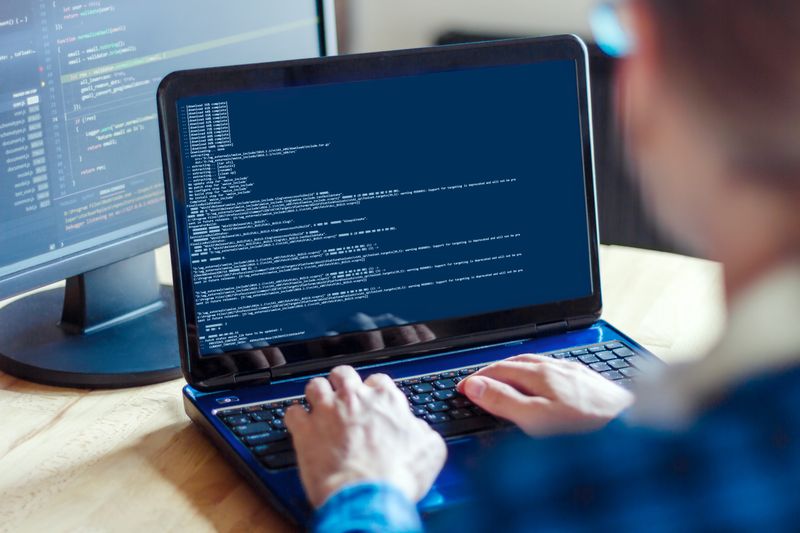
Forward-thinking libraries in the early ’80s introduced patrons to computing with time-limited sessions on Apple IIs or Commodore 64s. My first BASIC program—a simple text adventure—took shape during precious 30-minute slots at our library’s new computer station.
Librarians offered introductory programming classes where we learned commands by referencing dog-eared manuals. The competition for computer time was fierce, with sign-up sheets filling weeks in advance. Some libraries even formed computer clubs where members could share knowledge and collaborate on projects.
These early experiences democratized access to technology that many families couldn’t afford, sparking countless technology careers. Who knew that those green-screened machines with their blinking cursors were revolutionizing both libraries and society?
11. Calling Dial-A-Story Phone Lines
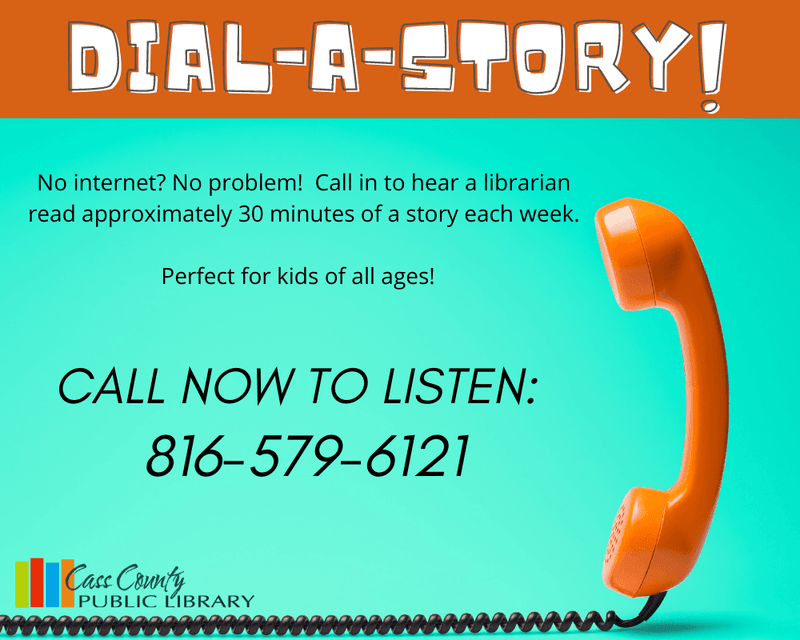
Libraries extended their storytelling beyond building hours through magical phone lines where children could hear recorded stories anytime. I still remember our home phone number and the library’s Dial-A-Story line: the only two numbers I memorized as a six-year-old.
Librarians recorded different stories each week, often incorporating sound effects and dramatic voices. Parents would call these numbers during sick days, bedtime, or whenever children needed entertainment.
The service particularly benefited families without extensive home libraries or those with parents working evening shifts. Our librarian, Miss Winters, had a theatrical background that made her recordings especially captivating. This innovative service demonstrated libraries’ commitment to making literature accessible beyond their physical spaces.
12. Borrowing Artwork and Framed Prints
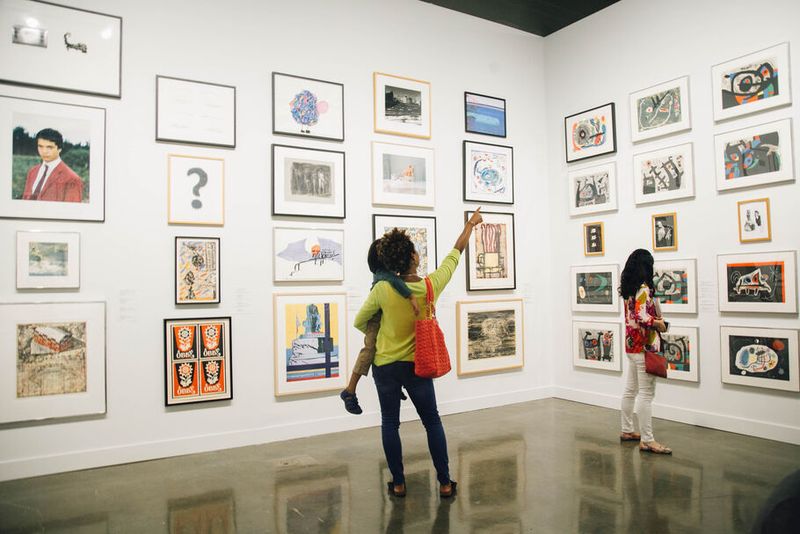
Art galleries existed inside libraries where patrons could actually check out framed prints to hang in their homes! Mom borrowed a Monet reproduction for our living room when hosting her book club—instant sophistication for our modest apartment.
These art lending programs typically included reproductions of famous paintings, original works by local artists, and educational posters. Borrowing periods ranged from one to three months, allowing families to rotate their home décor regularly.
The program democratized art appreciation, bringing visual culture into homes regardless of economic status. Some libraries even included information cards about the artists and artistic movements with each piece. For many children, these rotating artworks provided their first meaningful exposure to fine art.
13. Exploring Seed Libraries for Home Gardens
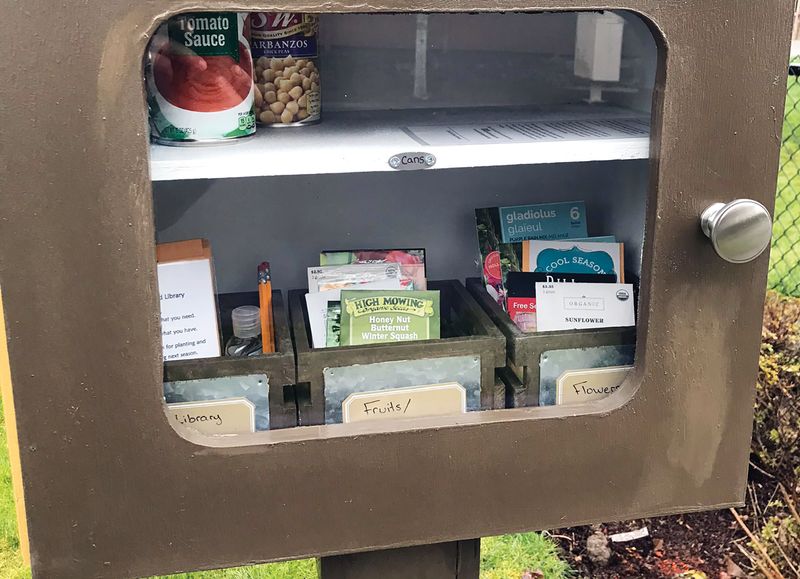
Gardening knowledge flourished alongside books as innovative libraries maintained seed collections for community members to “borrow” and plant. My first successful vegetable garden sprouted from heirloom tomato seeds checked out from our library’s wooden seed cabinet.
The system operated on trust—you’d take seeds in spring, grow your plants, and return some seeds harvested in fall. Accompanying the seed packets were gardening reference materials, planting calendars specific to the local climate, and sometimes pressed specimens.
These collections preserved agricultural heritage by maintaining heirloom varieties that commercial seed companies abandoned. Many libraries hosted gardening workshops led by local master gardeners, creating knowledge-sharing communities. The seed libraries particularly thrived during the back-to-the-land movement of the ’70s.
